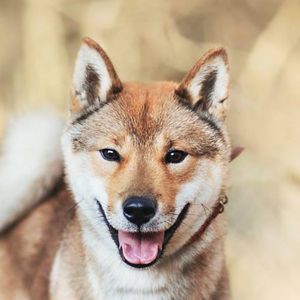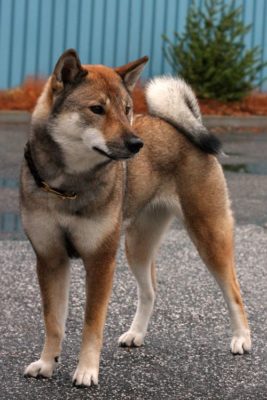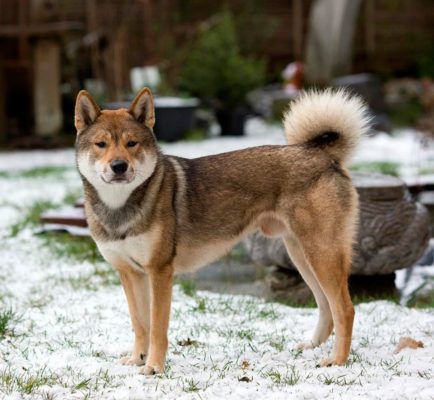Shikoku
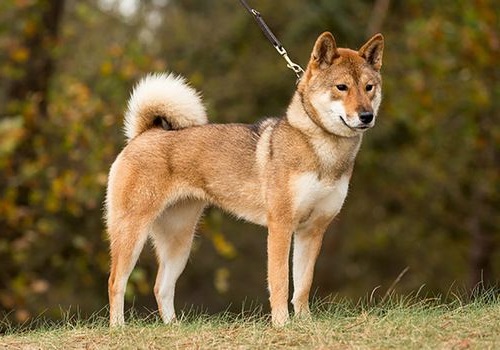
Shikoku are hunters by vocation, but kind and loyal alone with their owner. Sociability, intelligence, and energy are the main qualities of this dog. It is impossible not to mention the good-naturedness of the breed and the craving for entertainment. It is exactly the kind of pet with which you are sure not to get bored. Other pets will be patient and calm but do not forget about the dog’s innate hunting instinct.
Table of Contents
Breed Information
| Another Name | Kochi-ken |
| Origin | Japan |
| Height | Males 52-55 cm Females 49-52 cm |
| Weight | 16-26 kg |
| Fur | Medium |
| Color | Sesame, black, red, brown |
| Lifespan | 10-12 years |
| FCI Classification | Spitz and primitive types |
| Group | Hunting dogs, guard dogs |
| Price | From $6000 |
Breed Photos
Origin History
There is an interesting assumption by experienced breed researchers and some cynologists that the Shikoku is a direct descendant of the extinct Japanese wolves. Hence another name of the breed appeared – Japanese wolfhound. Because looking at this four-legged friend’s appearance, you can immediately notice a clear resemblance to the wolf. The closest relative of the shikoku is the dog breed Shiba-Inu. They are very similar in appearance and belong to the group of hunting dogs of Japan.
The different names and features of the breed are related to the location of the dogs. It is safe to say that the breed was bred to help in big game hunting. Why Shikoku? Shikoku is one of the most beautiful islands in Japan. There is an abundance of mountainous, riverine terrain where farmers, fishermen, and hunters are fortunate. Also, in one region of Shikoku, the rural town of Kochi, another name for the breed was born, namely “Kochi ken,” where Kochi is the breeding ground itself and “ken” (literally translated from Japanese) means dog.
After World War I, due to the difficult economic situation, dogs’ breeding and maintenance were suspended. In 1937, the Japanese dog-breeding organization Nippo officially recognized the breed. Shikoku was given the status of a natural monument and became a true national treasure. By 1982 the breed was also recognized by the Fédération Cynologique Internationale. Today, such dogs are considered a rarity even for Japan – no more than 300 to 400 animals are registered every year.
Appearance
The Shikoku has a charming appearance. It is a compact, strong, medium-sized dog with well-developed musculature. The body is well proportioned. The head is large, with a broad forehead. Wedge-shaped, long muzzle. The eyes are wide apart and not large. Triangular, pointed ears, slightly sloping forward. The neck is thick. The neckline is well defined. The tail is curved with a sickle or curled into a ring. The limbs are with developed muscles. The coat is double, hard, and straight. Thick undercoat. There must be peculiar to Uradziro breed coat, that is, spots of white or cream color, covering the color on sides of the muzzle, on cheekbones, throat, down of the neck and chest, on the belly, on the inner surface of the limbs, and the lower part of the tail.
Character
Shikoku are hunters by vocation, but kind and loyal alone with their owner. Sociability, intelligence, and energy are the main qualities of this dog. It is impossible not to mention the good-naturedness of the breed and the craving for entertainment. It is exactly the kind of pet with which you are sure not to get bored. Other pets will be patient and calm but do not forget about the dog’s innate hunting instinct. Strangers will be treated neutrally if they pose no threat to family or home.
Shikoku is a brave dog who is not afraid to stand up for himself. With proper care and walking, the Shikoku will be comfortable in both a spacious house and an apartment.
Care
Shikoku is one breed in Japan that is very well adapted to outdoor housing. There, they are often kept in suitable enclosures or kennels. In general, Shikoku care will not be difficult or problematic for you. Wool is tough, but due to the soft undercoat, shedding is quite strong. Regular brushing, at least once a week, is recommended. Observe also the usual hygiene procedures, such as:
- bathing once every few months;
- check the condition and clean the eyes and ears as necessary;
- claw trimming (can be done once a month).
This dog needs long walks and exercise to maintain his stamina and form.
Training
No doubt, the first thing you will have to teach your pet is respect. The Shikoku has a poised character, but it is not without its share of stubbornness. The pet needs early socialization.
Education is also better to start at an early age. It will help you build a more trusting relationship with your dog and show him who the leader is. In the future, it will play into your hands because the dog will do everything possible to please its owner.
It’s better to train the cat in the form of games. This way, you will attract the cat’s attention and arouse increased interest in the process.
Common Diseases
Although the Shikoku is not prone to serious hereditary diseases, every owner must carefully monitor his pet’s health. Some diseases are characteristic of this breed:
- hip and elbow dysplasia;
- allergic dermatitis;
- stomach congestion;
- neuralgia.
Nutrition
From the beginning of its existence, the breed was undemanding in food. Hunters and fishermen who kept these dogs fed them various fish and rice, sometimes deer meat. Nowadays, it is worth choosing a well-balanced diet with the right ratio of proteins and carbohydrates and adding vitamins. All of this is necessary for the normal functioning of the pet’s body, overall appearance, and forming a healthy skeleton.
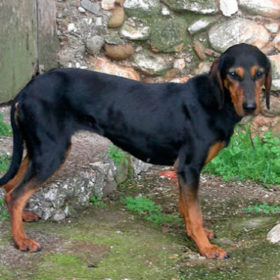 Greek Harehound
Greek Harehound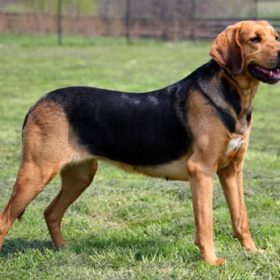 Polish Hound
Polish Hound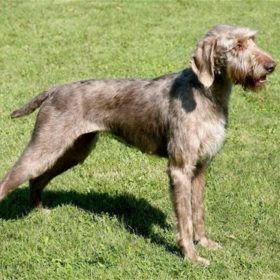 Slovak Rough-haired Pointer
Slovak Rough-haired Pointer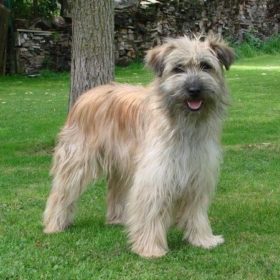 Pyrenean Sheepdog
Pyrenean Sheepdog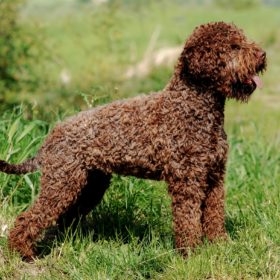 Lagotto Romagnolo
Lagotto Romagnolo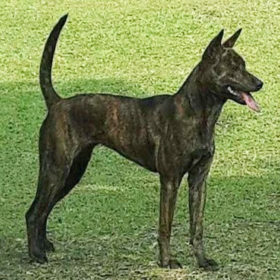 Taiwan Dog
Taiwan Dog